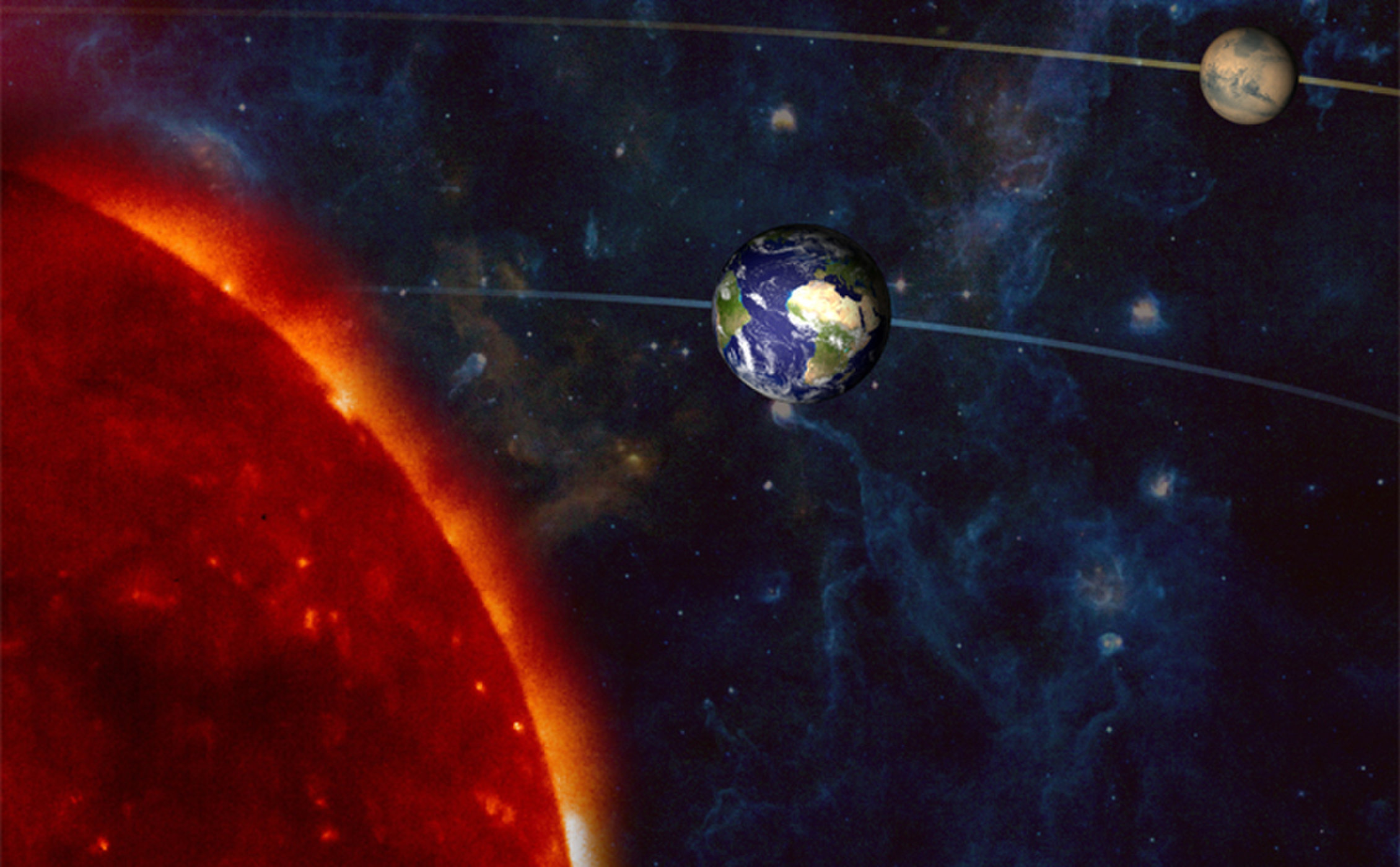The great confrontation of Mars in 2018: how to observe and what to expect
- Transfer

The confrontation of Mars in the view of the artist. Source: NASA
So, get ready to consider the Red Planet as it should: on July 27, Mars enters into a confrontation and will be practically “near” - this has not happened since 2003.
As we all know, Mars and the Earth revolve around the Sun, at different distances and, accordingly, at different speeds. But approximately every two years, the planet and the star gather at points lying on one straight line, and this is called a confrontation.
Such an event will again happen literally tomorrow, July 27; Mars will be closest to us at 07:50 GMT, July 31. Moreover, it is very bright - brighter than in 2003, when the distance between the planets was the smallest in the last 60,000 years [ Stunning photos of the surface of Mars from the NASA Curiosity rover ]
Plus, on Friday the full moon is why those observers who are lucky enough will at the same time see a full lunar eclipse, which will be the longest in the 21st century; Alas, the residents of the United States do not have such an opportunity. Read more about the phenomenon here: Bloody Moon 2018: The longest total lunar eclipse of the 21st century will happen on July 27th .
Closest since 2003
In 2003, Mars traveled 55.8 million kilometers from Earth - the planets haven’t been so close for 60,000 years, and this record will last until August 28, 2287 , according to NASA. For comparison, when the Red Planet is “beyond the Sun” in relation to us, at the greatest distance , it is about 401 million kilometers. In normal times, the average distance between the planets is about 225 million kilometers.
Entering the confrontation, Mars will continue to glow ominously in our sky for some time. On June 26, only 70.8 million kilometers separated us and, to the delight of amateur astronomers, it became five times brighter than usual; but by the time he reaches the closest point- “only” 57.6 million kilometers - the brightness will grow even more, somewhere twice as much as the current one. [ 8 cool places worth visiting for future Martian tourists ]
So what is “confrontation” all the same?
The Martian orbit lies farther from the Sun than the earth. Of course, with increasing range, the period of revolution also increases - a year on Mars is almost two on Earth. Due to this difference in circular speeds, our planet passes between Mars and the star every couple of years; thus, they are on the same line in different directions from the Earth. In this regard, celestial bodies fall into a certain antiphase: Mars rises immediately after sunset and is clearly visible all night.
However, the orbits are actually not circular, but elliptical, and therefore some “encounters” of the planets occur at a shorter distance than others; the next one is expected only in 2035.
Such a confrontation is called the Great, since Mars is now in perihelion of its orbit, and therefore, will be as close as possible to the Sun - and to the Earth, respectively, too.
How to see Mars
For approximately two months, from July 7 to September 7, the Red Planet will be the "main star" in the sky after the Sun, Moon and Venus, moving Jupiter from fourth place in the ranking of the brightest objects. [ “2018: the year of chic Mars” - a mobile tracking application ]
In May, we could simultaneously observe Mars and Saturn, easily distinguishable by color - red and golden, respectively; the best view was in the predawn hours in the Northern Hemisphere. By mid-May, Mars moved east from Saturn to the constellation Unicorn .
In the second half of June, Mars firmly took its place in the night sky, gradually increasing in size and glowing more intensely, and finally July 27 at the threshold; for the naked eye, nothing will change at least until August 31. As the sun gradually begins to set earlier, Mars is easy to find - it is still high above the horizon.
Watch out for Martian Practical Jokes

The picture that accompanied the e-mail about “Awesome Mars” in 2003 often appears as a fake. Source: original article
In 2003, during the next Great Confrontation, the viral news spread that “MARS WILL BE HUGE AS THE MOON !!!!”. Since then, this meme periodically pops up in the information space, usually around September, and is sure to crawl out again this year.
Do not be fooled: Mars is even physically half as large as the Earth , which means that now its magnitude in the sky will be 24.3 arc seconds. The moon, in turn, is "the size" of 1800
arc seconds - that is, 75 times larger.
Editor's Note: if you get a cool photo of Mars and you want to share it with Space.com, send files with comments to spacephotos@space.com.
